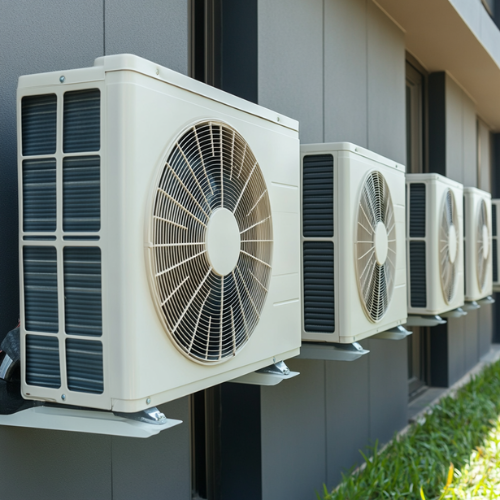
Air Conditioning Systems
Air Conditioning (AC) Systems are designed to control temperature, humidity, and air quality within indoor spaces. They are critical for occupant comfort, equipment protection, and environmental control in residential, commercial, and industrial applications.
Incase of Queries, Feel Free To Reach Us At 042-35153686
Main Types of Air Conditioning Systems
Split AC Systems
Type | Features | Ideal For |
Wall-Mounted Split | Indoor & outdoor units, refrigerant lines | Homes, small offices |
Floor Standing / Cabinet AC | High airflow, floor-mounted | Large halls, showrooms |
Ceiling Cassette | Installed in ceiling tiles, 4-way airflow | Meeting rooms, restaurants |
Ceiling Concealed Ducted | Hidden in ceilings with duct network | Villas, hotels, open-plan offices |
Centralized AC Systems
Packaged Units
- All-in-one system for medium spaces
- Used in small commercial buildings or rooftops
Chilled Water Systems
- Chiller + AHU/FCU setup
- Used in hospitals, malls, airports, factories
VRF/VRV Systems (Variable Refrigerant Flow/Volume)
- Multiple indoor units connected to one outdoor unit
- Highly energy-efficient and flexible zoning
- Ideal for hotels, offices, and mixed-use buildings
Window AC Units
- All components in one box, mounted on a window or wall
- Budget-friendly, simple to install
- Suitable for small rooms or single areas
Portable AC Units
- Freestanding units with exhaust hose
- No permanent installation required
- Used in temporary setups or mobile offices
Key Specifications to Consider
Parameter | Description |
Cooling Capacity | Measured in BTU/hr, kW, or Tons (1 Ton = 12,000 BTU/hr) |
Power Supply | Typically 220–240V (1-phase) or 380–415V (3-phase) |
EER / SEER / COP | Efficiency ratings (higher = more efficient) |
Airflow | Measured in CFM or CMH |
Noise Level | Indoor comfort consideration |
Compressor Type | Inverter (variable speed) or fixed speed |
System Functions
Function | Description |
Cooling | Lowers indoor air temperature |
Heating | Via heat pump or electric coil |
Dehumidification | Reduces moisture in the air |
Air Filtration | Removes dust, allergens (some with HEPA/UV options) |
Ventilation | Integrated in some systems or added separately |
Applications by Sector
Sector | Typical Systems Used |
Residential | Split, Window, VRF (for villas) |
Commercial | Ducted, VRF, Packaged, Chillers |
Industrial | Chilled water, Rooftop units |
Data Centers | Precision AC, CRAC units |
Hospitals | Chillers + AHUs, HEPA filters, pressurization systems |
Maintenance Needs
Task | Frequency |
Filter cleaning | Monthly |
Refrigerant level check | Biannually |
Coil cleaning | Biannually |
Electrical inspection | Annually |
Condensate drain check | Monthly |
